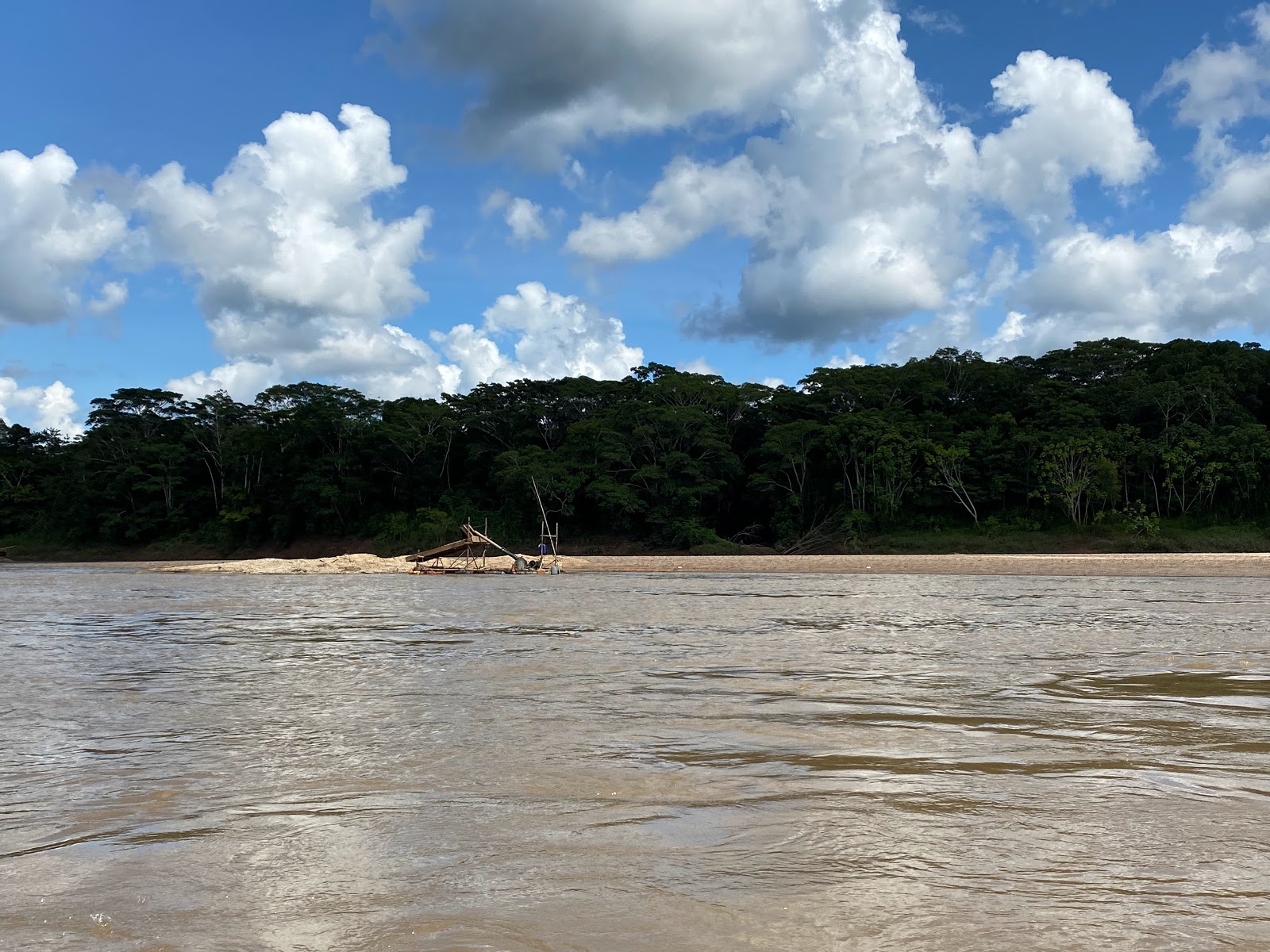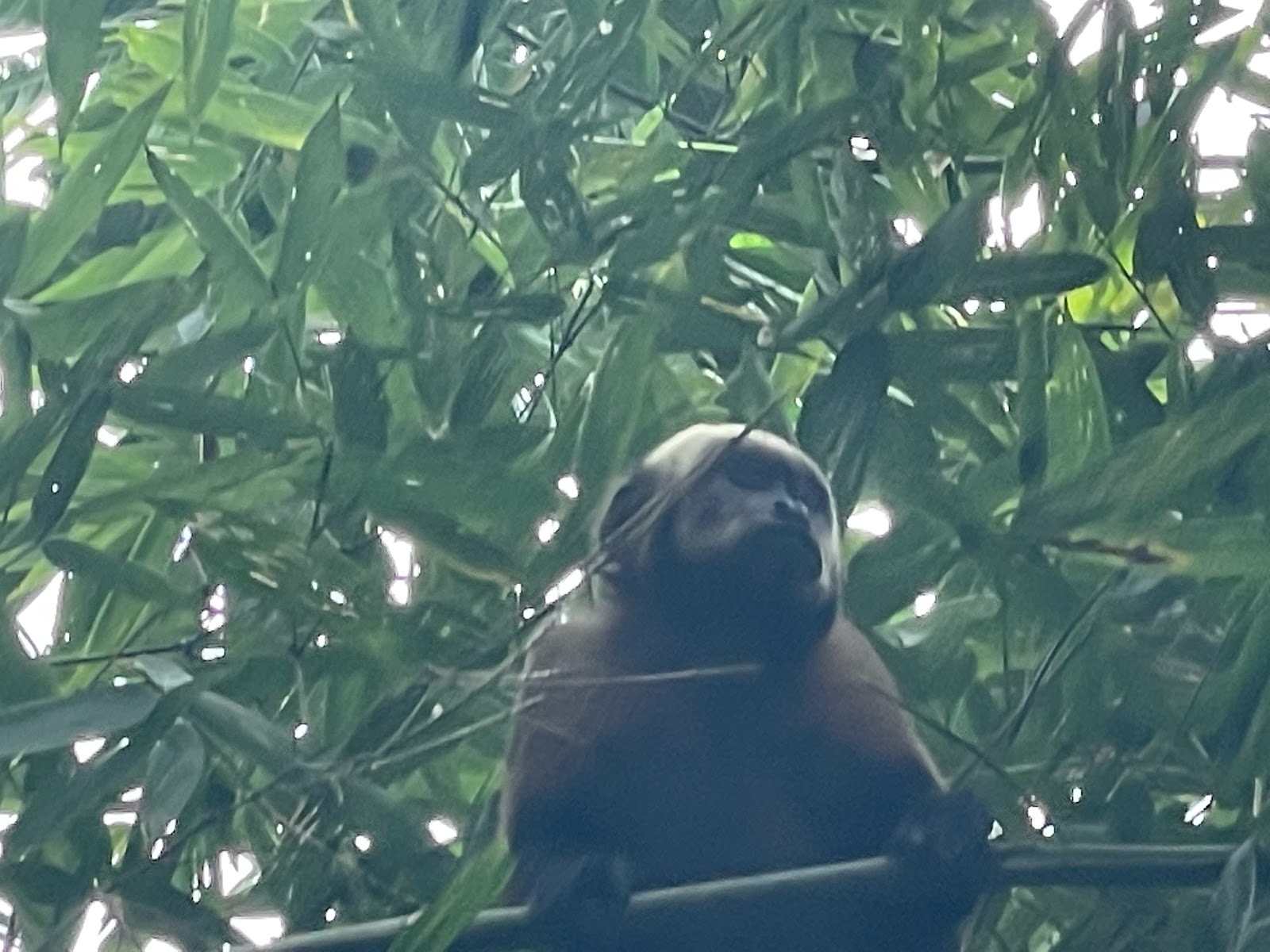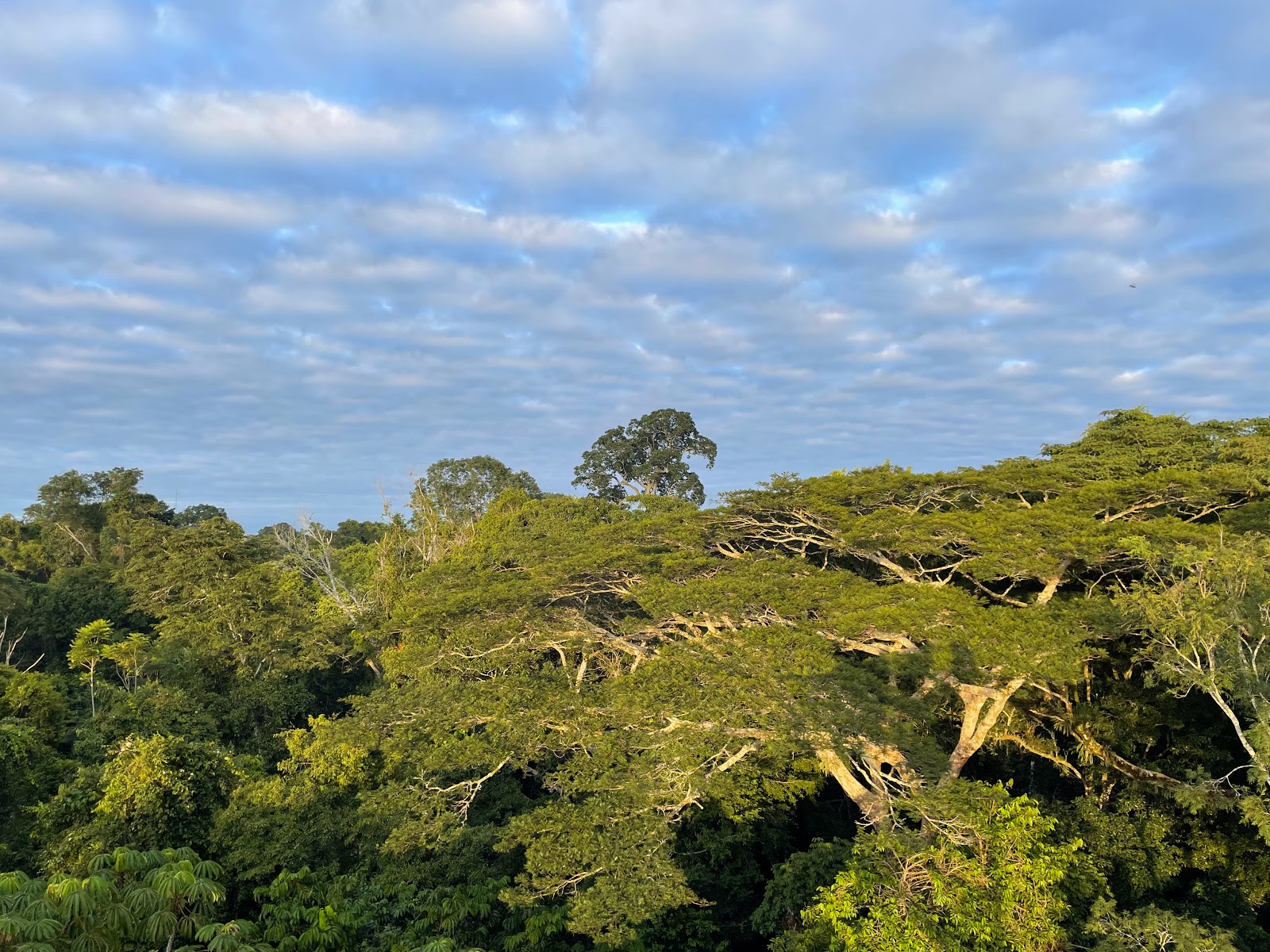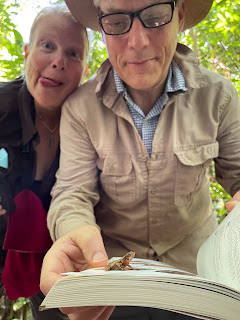After four days at Refugio Amazonas, we moved deeper into the jungle into the heart of the Tambopata National Reserve. Our next five days would be spent at the Tambopata Research Center, one of the most remote lodges in the Amazon.
It's actually a lot easier to get to these days since a new road was built to access a boat dock at Filadelphia, between Refugio and the TRC, near the fork of the Malinowski River. So we actually had to backtrack from Refugio to get to the TRC.) What was once an 8-hour trip from Puerto Maldonado is now a three and half hour boat ride from Refugio Amazonas.
 |
Along the way, we passed a makeshift wooden platform
with a slanted sieve and diesel engine.
Illegal gold mining, which is prevalent in the area. |
Two hours into our journey, we stopped at a half-sunk canoe next to a rickety set of stairs. It's the Malinowski control point, where we have to register to get inside the National Preserve. As we motor along for another hour and a half, it's feeling more remote and the forest more dense - we no longer see the (albeit sparse) lodges dotting the riverbank, and there's a heady sense of wildness as we scan the thick vegetation passing by.
Ahead, a dark shape on an overhanging branch catches our eye. It's a Great Black Hawk, standing with an almost military-straight posture.
 |
| Did you know? Capybara supposedly taste like fish! |
Further ahead on the riverbank, we strain to spot a group of capybara - looking just like the muddy boulders they are lounging on. More and more appear as our eyes adjust.
Once upon a time, the Catholic Church decided that, since capybara spend so much time in the water, that they were considered fish! So they are allowed to be eaten during the meatless Lenten season.
All too quickly we pull up to the shore - we've arrived at the port for the TRC and we disembark for the ten minute hike to the lodge. Perhaps it's just my imagination, but this trail seems narrower and darker than the one at Refugio. The group ahead stops to stare into the trees - it's a group of saddleback tamarins - and after just a few more steps, the path opens up to the lodge.
The TRC was originally built as a research center, but about six years ago they expanded and built luxurious (albeit 3-walled) rooms to accommodate more guests. I went fully expecting a "roughing it" experience, but this was NOT it. It was a five-star eco-lodge, with all-day electricity and wifi even in our rooms. Immediately upon arriving in our rooms, we noticed movement in the trees behind our open wall.
 |
| Not a bad view... |
 |
| Howler monkeys, howling |
A huge fig tree was in fruit, and on various occasions, groups of spider monkeys and howler monkeys entertained us with their antics. From the missing back wall of our room, we could easily watch them as they foraged for fruit and jump from tree to tree.
 |
| Spider monkey, spider-ing |
We were excited to venture out into this part of the rainforest since, being more isolated, there was a greater chance of seeing a greater quantity and variety of species. We hiked our first afternoon to an overlook for a stunning view.
 |
| Seriously... that hair. Jealous much, Elvis? |
During our stay, we spotted several strange and interesting birds, including the razor-billed curassow, Spix's guan, red-throated caracara, and several of these blue-throated piping guans:
I also loved this pretty little Bluish-fronted jacamar:
I particularly liked the hike through the Bamboo Trail - who knew there was a species of bamboo (known as Guadua) that grew in the Amazon?? They particularly thrive on the poorly-draining upland soil found in this area, and they are home to a number of frogs, birds, and monkeys. From one overlook, we spotted four separate species of monkeys - dusky titi, brown capuchin, spider, and squirrel! And on our hike back, a huge troop of what felt like at least 100 squirrel monkeys surrounded us, chittering away.
 |
| Tiny squirrel monkeys are constantly in motion! |
 |
| Brown capuchins, who hung out in harmony with the squirrel monkeys |
🐍 Sssnaaaaakes! 🐍
Perhaps the most famous of the Amazonian snakes is the anaconda - no, we didn't see one, but we tried our hardest!! The largest anaconda species can grow up to almost 30 feet in length, and weigh a monstrous 500 lbs. But anaconda, whose scientific name means 'good swimmer', are hard to find since they generally spend most of their time submerged underwater, with just their eyes and noses (which are higher up on their heads than most snakes) poking out. But that didn't mean we didn't see any other snakes.
Another common rainforest snake is the Amazon tree boa - which, although non-venomous, can be aggressive. Tree boas are predators that eat frogs, bats, lizards, and rodents, and spend most of their time traveling in the treetops. So it was amazing to me that on one evening walk, Anil spotted one in the branches overhead!
During the wet season it floods much more here than it does at Refugio, and we noticed that all the boardwalks were built considerably higher from the ground.
They were also much, much longer, so walking to and from our rooms felt like miniature expeditions into the forest. And we encountered plenty of wildlife on those boardwalks, to be sure! On our very first day, I walked by myself to the lounge to meet up with the group. Now keep in mind, the boardwalk is L-O-N-G, a solid and steady five-minute walk, and it basically goes through the forest. The vegetation is cut back from the walkway, but the trees are tall and branches stretch overhead and provide a canopy.
Halfway to the lounge, I spot movement up ahead - a snake! I quickly look behind me and ahead of me, but I'm all alone. As I get closer, I realize 1) I have no idea what kind it is (or if it is venomous, aggressive, or fast...), 2) it's thin, but really really long (maybe 10 ft), and 3) there's nowhere for it to go but along the boardwalk - either in the same direction that I'm going, or towards me.
I freeze. I look front and back and see that I'm totally alone. I'm torn, wanting to call for someone to share this experience with me, but knowing I probably can't run fast enough to get my friends. So I just wait and watch, enjoying my encounter. It must have dropped down from some overhead tree, and there were no nearby branches where it might have come from, and the boardwalk was perhaps 15-20 feet above the forest floor. The snake hasn't seen me (or just doesn't care), and starts moving away from me, searching for a way off the boardwalk. I slowly followed it (from afar!), until it got to a branch that hung about a foot from the boardwalk, and it tentatively stretched its neck, testing to find a part that was strong enough to hold its weight (there wasn't one). It took a little leap, but the branch gave away and the poor snake plummeted down onto the forest floor, where it quickly disappeared into the underbrush.
It was, I think, Chironius multiventris - commonly called a long-tailed machete savane. Our guide Paul says that they aren't venomous, but their method of defense is to use their long tail like a whip. (I'll admit it - I kinda want to be whipped by a snake. Dang... lost opportunities...)
We later encountered a smaller one in the forest, who moved surprisingly fast to get away from us.
 |
| I spy, with my little eye, something slithering in the forest! |
Come back little snake! I just want a hug!
Tambopata does not disappoint!












































































